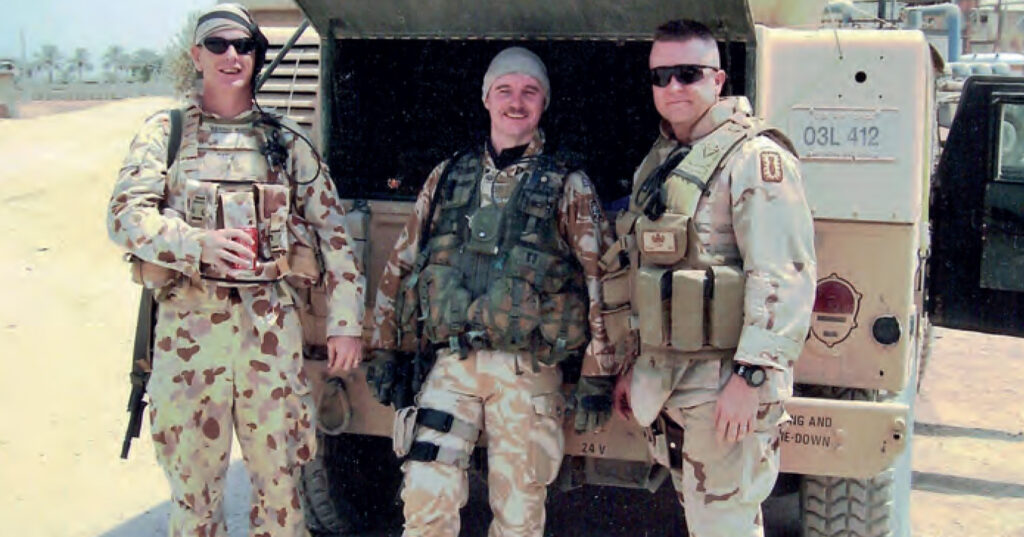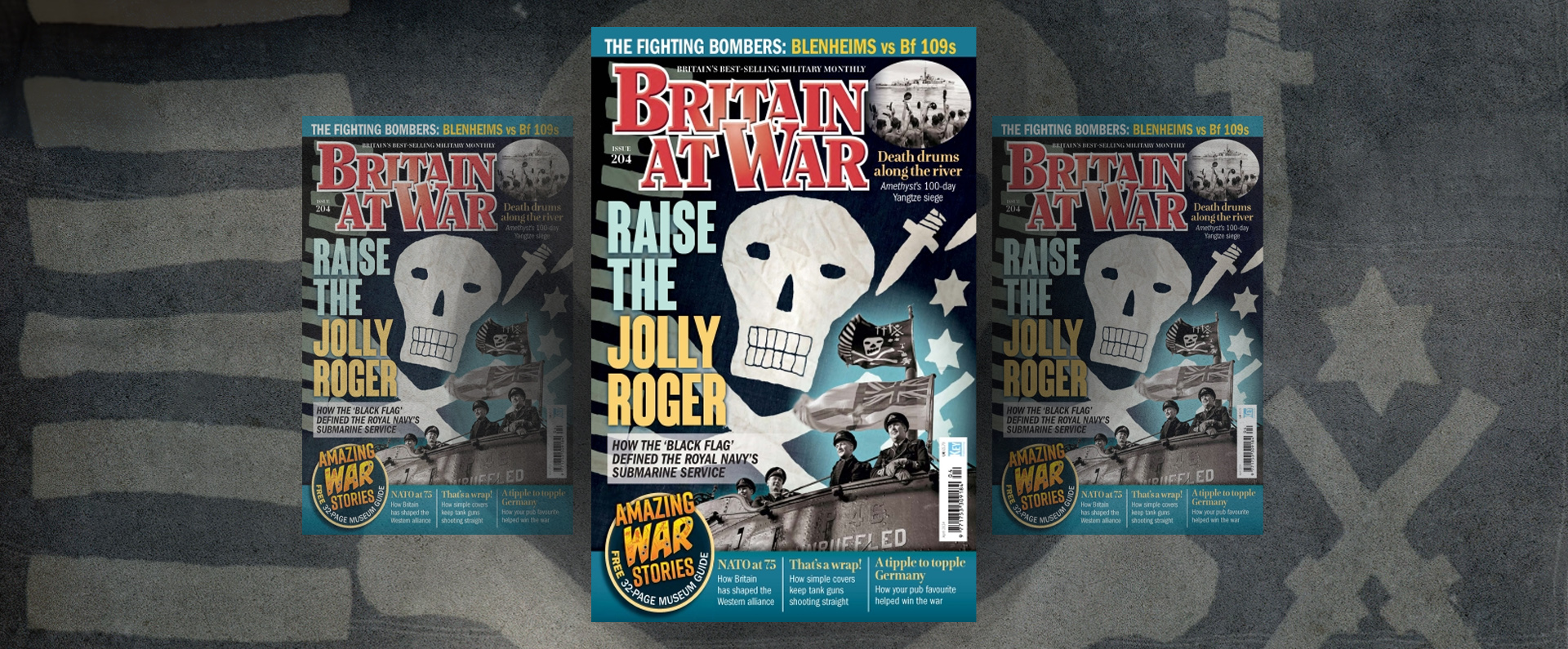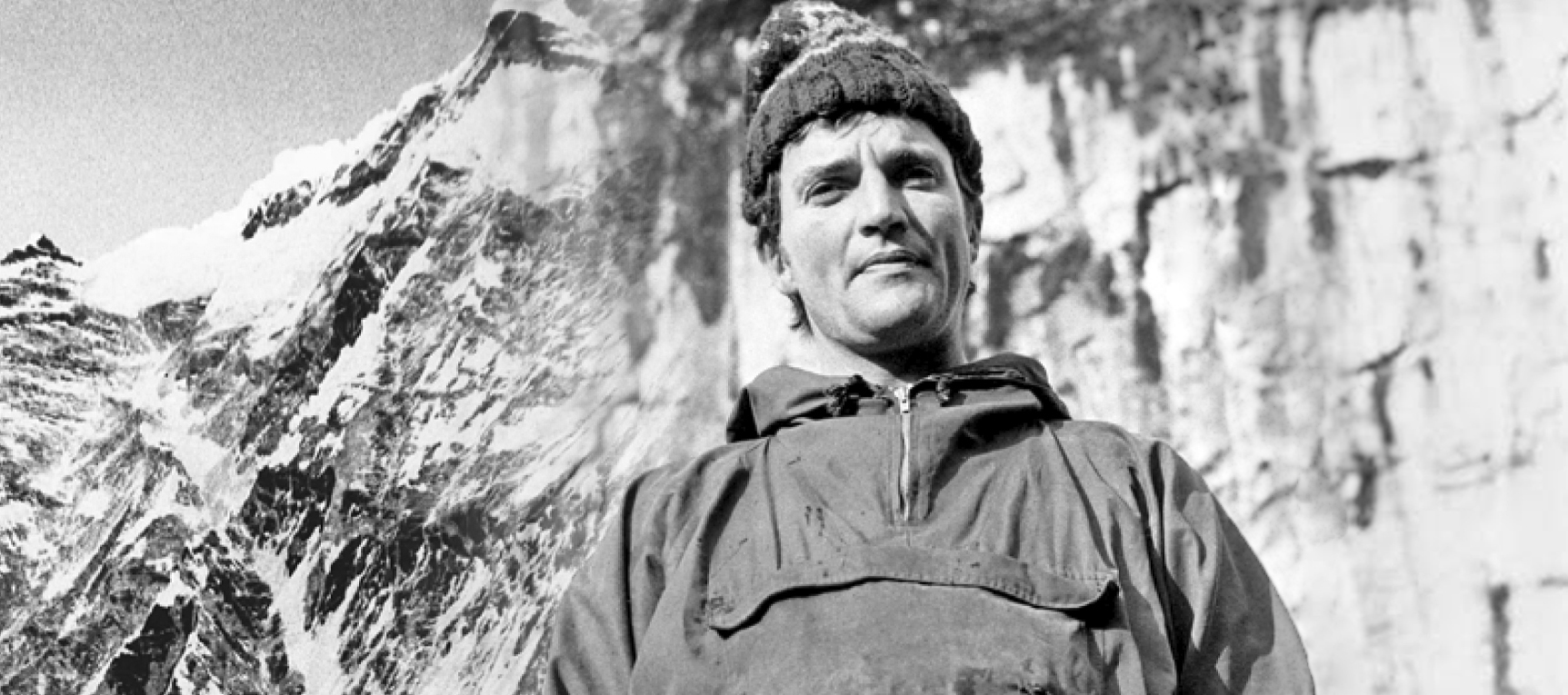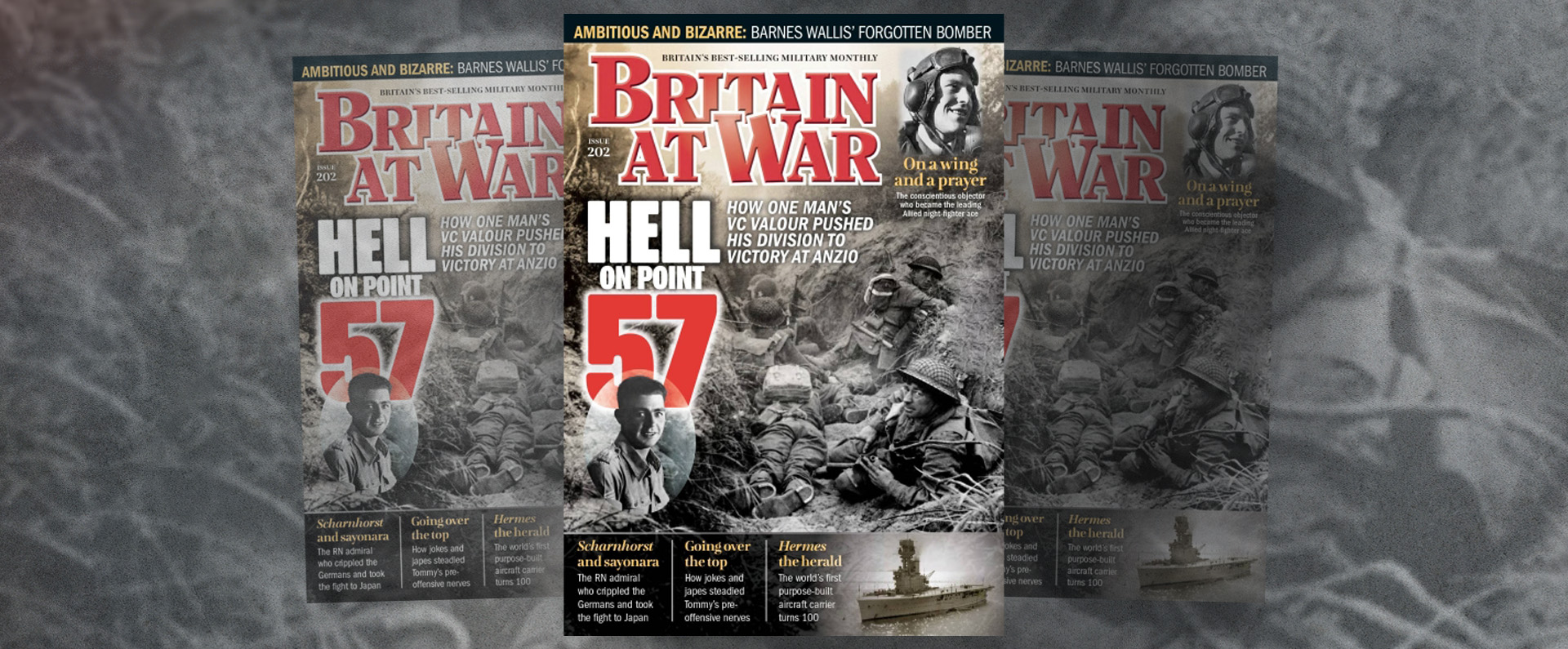
Published in Britain at War in April 2020.
Major Peter Allen Norton GC
Major Peter Norton was awarded the George Cross (GC), Britain’s and the Commonwealth’s premier gallantry award for bravery not in the face of the enemy, for outstanding courage in Iraq in 2005. The GC is often affectionately known as the “civilian VC” but, in reality, as in Norton’s case, it is often awarded to military personnel, particularly bomb disposal officers.
Peter Allen Norton (usually known as “Pete”) was born in Edmonton, north London, on December 10 1962. Adopted aged three months, he took the surname of his adoptive parents and was brought up in the Kent village of Garlinge, near Margate. He left school aged 17, finding work in a local sports’ shop.
However, by the end of 1982, shortly before his 20th birthday, he decided to join the Army. Although he initially applied for a commission, he eventually decided that, rather than delay his admission, he would enlist in the Royal Army Ordnance Corps to train as an ammunition technician (AT).
At the end of his basic training in 1983, he was awarded “best recruit”. Norton then, in 1984, attended the Royal Military College of Science (RMCS), Shrivenham, Oxfordshire, and the Army School of Ammunition, Kineton, Warwickshire, to undertake AT training, again qualifying as the best student.
Over the next two decades, he served in Germany, Oman, America, Kenya and Northern Ireland (five tours), as well as Britain. In 2001, whilst serving as the warrant officer class 1 (WO1) Senior Ammunition Technician (SAT) in Northern Ireland, he was appointed to Conductor Royal Logistics Corps (RLC), the most senior and prestigious warrant officer appointment in the British Army. In July 2002, he was commissioned into the RLC as an ammunition technical officer (ATO) with the rank of captain. He had married in 1992 and he and his wife later had two sons.
It was only three months after the birth of his younger son in January 2005 that Captain Norton was deployed on operations to Baghdad, the capital of Iraq. He was serving in the war-torn country, two years after the overthrow of Saddam Hussein, as the second-in-command of the multi-national US-led Combined Explosives eXploitation Cell (CEXC) based in Camp Victory on the outskirts of Baghdad. The unit was tasked with investigating Improvised Explosive Device (IED) incidents: needless to say, this often involved highly-dangerous work.
On the afternoon of July 24 2005, a three-vehicle US patrol from B Company, 2nd Battalion, 121st Regiment of the Georgia National Guard, was attacked using a massive IED in the al-Bayaa district south-west of Baghdad. The explosion completely destroyed one of the patrol vehicles, a Humvee, killing four US servicemen. Parts of the vehicle, military equipment and human remains were spread across a vast area of ground.
A CEXC team, commanded by Norton, was briefed on the incident and arrived at the scene shortly after 7pm. By the time the five-man team arrived, it was dark. On arrival, Norton took charge of a scene of devastation and carnage.
In an ideal situation, an Explosive Ordnance Disposal (EOD) team would have attended the scene first to check for other devices. However, there were so many IED incidents in Iraq at the time that weapons’ intelligence teams were regularly having to attend events without an EOD team having first cleared them. On the ground, Norton knew that there was a high risk of concealed secondary devices, which could be triggered by command wire, radio control or victim operated.
However, he also knew that it was dangerous for the military to remain static for long periods, especially at night; it made them vulnerable to small-arms fire, rocket propelled grenade (RPG) attack, indirect mortar fire or suicide bombers. After questioning those US soldiers who had been present at the time of the explosion and visually assessing the scene, Norton could see that the area was well-trodden, which reduced the risk of a secondary IED. He was, however, informed that a possible command wire had been spotted in the vicinity of the explosion site.
Under these circumstances Norton decided that a “rapid clearance of the scene” was required with minimum exposure of personnel. He ordered his team and the US forces to stay with their vehicles. Wearing only his body armour, helmet and standard kit, he, as a “one-man risk”, examined the area using a combination of night-vision equipment and “white light” to search for secondary devices.
Norton had examined the north side of the road, and was about to cross to search the area to the other side, when his left foot trod on a pressure-switch, concealed beneath the ground, and triggered a huge blast. Norton remained conscious even though he had horrendous injuries and the explosion had ripped off his left leg just above the knee in what is called a “traumatic amputation”. He also suffered serious blast and fragmentation injuries to his right leg, left arm, lower abdomen and back.
Yet, when the medical team first came forward to treat him, he was lucid and most concerned for their safety. Norton had deduced correctly that he had stepped on a “victim-operated” IED and that it was highly likely that other, similar devices were present. As he lay severely-wounded and before receiving any treatment, he directed the team on the areas to go which were safest.
The citation for his GC, announced on March 24 2006, stated: “Despite having sustained grievous injuries he remained in command and coolly directed the follow-up actions. It is typical of the man that he ignored his injuries and regarded the safety of his men as paramount as they administered life saving first aid to him. It is of note that a further device was discovered less than ten metres away and rendered safe the following day. Norton’s prescience and clear orders in the most difficult of circumstances undoubtedly prevented [further] serious injury or loss of life.”
Yet, significantly, Norton’s GC was also to honour him for no less than three other incidents of outstanding bravery earlier in his tour which were also referenced. His citation ends: “He has consistently behaved in an exemplary fashion and his professionalism has been of the highest order. Norton displayed outstanding bravery at the incident in Al Bayaa and throughout his tour.”
In 2010, Norton was also awarded the “FBI Star” by the Director of the FBI at an awards’ ceremony in which two members of his team were also recognised for the part they played in saving his life on that eventful day.
In an interview for my book “George Cross Heroes”, Norton recalled the moment his life changed forever with a huge explosion beneath him. “There was a huge rush of hot air gases running past me and an immense pressure pushing me upwards. This was accompanied by a huge, instant deafening noise. Then I had a feeling of flying and tumbling through the air which was brought to an end by a crushing thud as I hit the deck. I was thrown a distance of about 25 feet. I couldn’t feel pain but I knew straight away that I had been hit and it wasn’t good. First I had to get my breath back because it had been seriously knocked out of me. I couldn’t really move much but I managed to roll on my back. At that moment, I could have relaxed and I would probably have died there and then.
“But as it was I said: ‘I am not going. I am going to get back and see the kids.’ I decided to fight it [death]. I remember calling out for a medic – I think the only reason I did this was to let them know I was still alive. After watching all those Vietnam War movies, it just seemed like the right thing to do. They [the medics] said later it had taken a long time to see where I was. There was a lot of smoke and it looked like I had just disappeared. As I was being treated, I was keen that nobody else moved around unnecessarily because I felt there were bound to be other devices around. I knew where I had been – and they needed to know where I had checked [for IEDs] and where I hadn’t. They were applying tourniquets etc and, as soon as they were happy to move me, I was taken on a stretcher to the ICP [incident command post]. Then they stabilised me until the Black Hawk medical helicopter arrived, which they later said was abut 40 minutes.”
Norton remembers nothing from taking off in the Black Hawk helicopter to waking up in Selly Oak hospital in Birmingham. However, he had been taken, still conscious, to the Combat Support Hospital in central Baghdad. In fact, he had been put into an enforced coma by surgeons in Baghdad and in Norton’s words was given “24 hours to either stabilise or die”. He was kept there for a day and was then moved to a US military hospital in Germany for three days, where he underwent further surgery, before being transferred to Selly Oak.
His injuries were horrendous. As well as losing his left leg, his left hand had been so badly damaged that the arm was amputated below the elbow. Norton also lost 80 per cent of his right buttock, most of his right hamstring, right calf and four inches of sciatic nerve leaving him with no movement in his right leg below the knee. Furthermore, he fractured three ribs and was hit by a large fragment of artillery shell that hit the plate of his body armour along his spine, fracturing three vertebrae. He also suffered blast damage to his lungs. “That was about it,” he said with a shrug and a smile after listing all his injuries.
He was treated in Selly Oak for 11 months during which he learnt he was being awarded the GC: he told me that news in March 2006 had left him “gobsmacked” with a sense of pride and delight. He later, in November that year, received his decoration from the Princess Royal. After Selly Oak, he was transferred to Headley Court rehabilitation centre in Surrey, where he spent a further 13 months.
Norton’s discharge from Headley Court in July 2007, two years after he received his injuries, coincided with the break-up of his 15-year marriage and subsequent divorce. He moved to Shrivenham, where he completed a year-long Masters in Explosive Ordnance Engineering, which had been planned while he was serving in Iraq. After completing his course in August 2008, he continued at the Defence Academy’s “College of Management and Technology” teaching future ATs and ATOs. On July 8 2009, he was promoted to major.
Norton retired from the Army on medical grounds on August 1 2013, the same year that he married Dr Katherine Hewins, whom he had met whilst they both studied at Shrivenham, and with whom he now has two young daughters. Most recently Norton has undergone cutting-edge surgery, including having his other leg amputated, which, after extensive rehabilitation, should allow him to walk again. Now aged 57, Norton is the Chairman of the Victoria Cross and George Cross Association, a position he has filled since 2014.
Download a PDF of the original Britain at War article
For more information, visit:
LordAshcroftOnBravery.com


